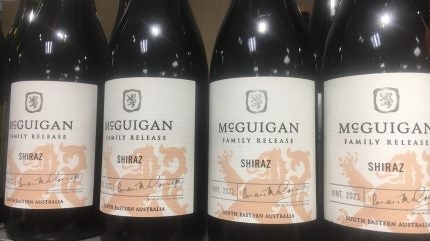
Australian Vintage is forecasting a “transformational” 2026 financial year following a slight sales decline and a loss in the 12 months just completed.
The owner of McGuigan and Tempus Two brands recorded a 1% fall in sales for the year ended 30 June, totalling A$257.1m ($166.7m).

Discover B2B Marketing That Performs
Combine business intelligence and editorial excellence to reach engaged professionals across 36 leading media platforms.
“A relentless focus on cash flow through cost-out measures has seen earnings and cash flow improvement in FY25, but still behind company targets,” Australian Vintage said.
“Despite this, improvements in earnings and cash flow were noted, though they remain below company targets.”
Earnings before interest, tax, depreciation, amortisation, and SGARA (EBITDAS) recovered to A$15.3m from a loss of A$52.4m in 2024.
Australian Vintage booked a net loss after tax and before SGARA (NPATS) of A$5.9m, an improvement from a loss of A$86.1m in the year previous.

US Tariffs are shifting - will you react or anticipate?
Don’t let policy changes catch you off guard. Stay proactive with real-time data and expert analysis.
By GlobalDataFor FY26, Australian Vintage is aiming for a 5% to 8% increase in sales, reversing previous declines and “pivoting the group on a positive free cash flow trajectory”.
The company said early signs in July show “positive” consumer adoption in the UK for new brands Poco Vino and Lemsecco, with sales growth projections upgraded to A$15m and A$6m, respectively.
It plans to expand Poco Vino’s distribution from Australia and the UK to New Zealand, Thailand and Malaysia, along with markets in Europe, the US, and the Middle East.
New product lines and manufacturing hubs in Amsterdam, Napa Valley and Merbein are expected to “increase profitability and speed to market”, Australian Vintage said.
Despite a 1% sales decline in FY25, Australian Vintage said it improved its market share in “key regions”, outperforming other Australian wine businesses in scale wine segments.
Its so-called “pillar” brands contributed 78% of total revenue, with growth from Tempus Two, Nepenthe and Barossa Valley Wine Company.
In May, Australian Vintage acquired international rights to the MadFish brand, excluding Australia, and secured the distribution rights for Howard Park wines in the UK, Ireland, Europe and Canada.
In terms of inventory levels, Australian Vintage said they increased by A$19m to A$220m in FY25 due to contracted wine intake and new product launches.
A reduction in inventory is expected in FY26 and FY27 as long-term grower contracts expire and “strategic lease exits” are completed.
Last month, Australian Vintage decided to end its lease for a vineyard located in Millewa, Victoria, three years before the agreed-upon end date.
Additionally, in May last year, the company concluded a long-standing lease with the proprietors of the Balranald vineyard situated in New South Wales.
Two months later, the company proceeded to sell a vineyard in South Australia to The Randall Wine Group.





